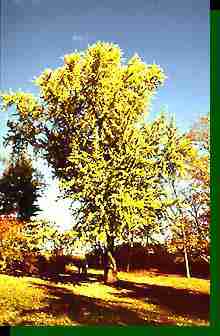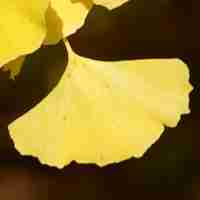 |
> Plus de cours & d'exercices d'anglais sur les mêmes thèmes : | Nature [Autres thèmes] |
| > Tests similaires : - Sous l'eau - Vocabulaire : Notions de géographie - Animaux en images - Soleil, ciel, étoiles - Arbres et arbustes fruitiers - Dans le jardin-Lexique - Fleurs - Jardinage | |
| > Double-cliquez sur n'importe quel terme pour obtenir une traduction... |
Arbre extraordinaire
Ginkgo Biloba
A living fossil
The ginkgo is the world's oldest living species of tree.It is the only survivor of a family that existed more than 200 million years ago and kept company to the dinosaurs.
It survived the crisis which exterminated them. However Ginkgo trees eventually vanished in most regions.
They were, in fact, thought to be extinct until rediscovered in the 17th century in eastern China. The buddhist monks venerated them, that's why they still exist.
The oldest European Ginkgo would have been sown in 1730 in Utrecht National Garden.
Description
Ginkgo Biloba trees are dioecious ( male and female trees ). They grow up to 40m and can have a long life span 1,000 or older. The oldest tree is about 3,500 years old.
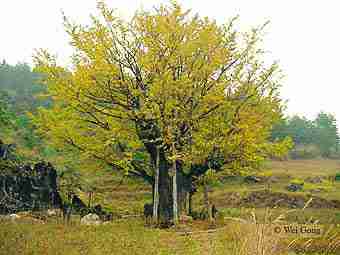 This Ginkgo is 2,500 years old ( China )
This Ginkgo is 2,500 years old ( China )
These trees can't be classified, they are neither coniferous nor leafy. They have atypical leaves looking in no way like anything else.
The leaves
They are fan-shaped with a split in the middle, hence two-lobed . ( biloba comes from bi - lobed )
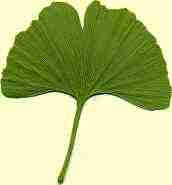 In spring the leaves are light-green
In spring the leaves are light-green
but will suddenly turn a pure dazzling yellow in Autumn
The fruit
The seed has the size and the appearance of a small apricot when mature.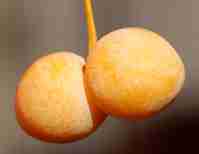
What makes the Ginkgo tree so special ?
It has incredible physical qualities
This tree is particularly resistant to insect pests and fungal, viral or bacterial diseases.
It's also resistant to fire and radioactive radiations. Ginkgoes that were in the worst of Hiroshima bomb are still alive.
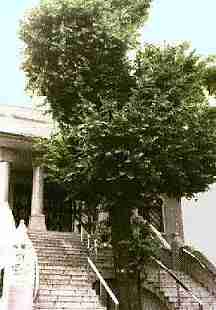 This Ginkgo is situated 1100m away from the blast center. When he rebuilt the destroyed temple which was there the architect divided the stairs to protect the tree.
This Ginkgo is situated 1100m away from the blast center. When he rebuilt the destroyed temple which was there the architect divided the stairs to protect the tree.
Ginkgoes tolerate urban pollution as well so they 
are commonly planted to line streets.
Medical uses
An extract is prepared from the dried green leaves. Worwilde millions use this extract for better health. It increases blood circulation to the entire body especially the brain. It increases memory and functions that diminish as we age.
Ginkgo does appear to be a fountain of youth
Exercice d'anglais "Arbre extraordinaire" créé par lili73 avec le générateur de tests - créez votre propre test ! [Plus de cours et d'exercices de lili73]
Voir les statistiques de réussite de ce test d'anglais
Fin de l'exercice d'anglais "Arbre extraordinaire"
Un exercice d'anglais gratuit pour apprendre l'anglais.
Tous les exercices | Plus de cours et d'exercices d'anglais sur les mêmes thèmes : | Nature



